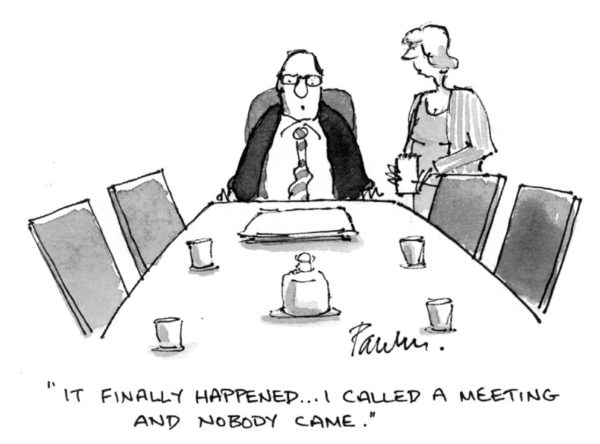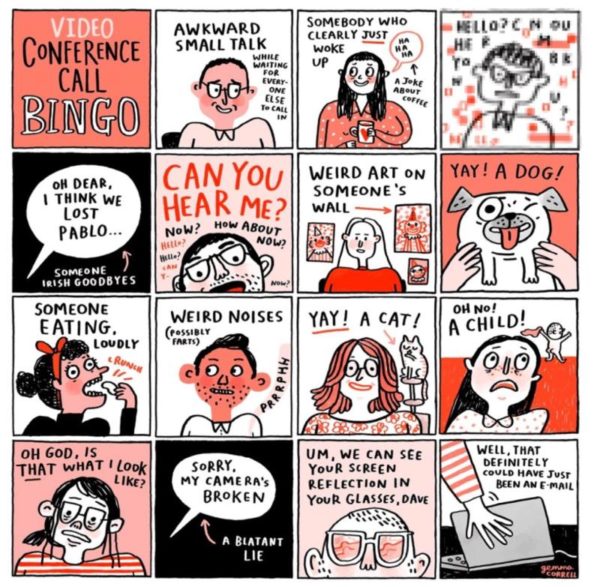Have you recently shifted to working remotely? Has it been a smooth process, or more of a bumpy ride?
Getting into remote work is tricky. Making the switch from a regular co-located team to a fully remote team as many of us recently have had to do is particular difficult.
Fortunately, these are well-known issues that can be solved. Isolation, communication issues and lack of visual cues are just the start, so let's get into some deeper problems and how to solve them so you can learn how to work remotely like a pro.
Today's article is a guest post from Dominic Monn, the Founder of NoHQ and MentorCruise, and has been a remote worker for years. Below you'll find his best advice for those new to remote management.
Table of Contents:
- The Problem: Why is remote work so hard to master?
- The Solution: Remote work means going async and silent
- How to Do It: More documentation >>> synchronous communication
- How to Work Remotely like a Pro by Improving Your Writing Skills
- Can you really get rid of all of these meetings?
- Making remote meetings work for you and your team
- 5 Rules for deciding if a meeting is worth keeping
- Further Reading

The Problem: Why is remote work so hard to master?
With remote work gaining popularity, and COVID lockdowns having forced the issue, there have been many resources published to try to help. It's important to understand that not every piece of content is applicable to every company.
If I have learned anything from talking to over 40 remote-first companies, including GitLab, Doist, Buffer and co., and being a remote worker myself for the past 2.5 years, it's that every well-known remote company publishing content is solving and writing about different struggles.
At the end of the day, GitLab with over 1,000 globally distributed employees has different struggles than Ghost with just over 10 employees.
Any advice that GitLab can offer may not be applicable to Ghost, because in addition to operating at different scales, GitLab started with an office and a few distributed people, while Ghost has a team with many nomads and a lot of distribution across time zones.

The Solution: Remote work means going async and silent
The workplace of today is built entirely on synchronous communication. Whether it's one of many meetings, a coworker showing up at your desk, or a quick ping via Slack or Microsoft Teams – we have learned that interactions are supposed to be instant, quick, and the highest priority.
It's only natural that teams, once they work remotely, expect to continue this and implement a lot of recurring meetings via Zoom and use Slack. Yet, that's far from the best approach.
"I can't think of anything that wouldn't work in an async way." – Michael Fey, VP of Engineering, 1Password (Fully Remote, 200+ Employees)
The most successful remote teams have discovered that this isn't productive at all, and have switched to an asynchronous way of working.
The cornerstone of this is to switch to a slower medium for day-to-day communication.
In a lot of these companies, E-Mail is making a big comeback over Slack, and more and more companies are starting to use tools like Twist or Basecamp to get their day-to-day communication stored asynchronously.
Asynchronous communication is about a lot more than writing emails where you often used to write a Slack message. It's also about preventing the kind of interrupting back-and-forth messaging being needed in the first place.

How to Do It: More documentation >>> synchronous communication
As remote teams are going more widely distributed and might be working from different time zones (or facts of life in quarantine changing people's work hours around things like childcare), putting more work into documentation is crucial.
Having processes and workflows in a documented form allows questions to be answered quicker and without the need for interactions and disturbances.
The key to documenting more is to write everything that is happening down, and storing it in a central place. The GitLab handbook and Basecamp handbook may be the most prominent (and public) examples of this, but these handbooks exist in many remote-first companies.
These handbooks are often the first point of contact if there is an issue, saving team members from needing to ping a colleague for an oft-asked question.
These handbooks are able to be written and edited by anyone, while managing consensus effectively. Thanks to systems like the Git protocol and platforms like GitHub and GitLab it's easy to manage updates; they allow for easy edits, review through the PR system, and can be managed on multiple branches and with multiple collaborators. This way information stays up to date, while having some oversight with a simple process for making corrections or undoing a change.
The right time for you > right now
Async communication mediums have a built-in excuse for not reacting to messages instantly, due to their natural speed and size of messaging. You can't read an entire document while you're in the middle of something else. This means you'll give the document your full attention when you're ready to focus on it.
Also, by not requiring an immediate response, it allows employees to work at a time and in an approach best for them, solving many timezone-related issues in process.
By documenting in more detail, and in a structure your team becomes familiar with, meetings are transformed from a necessary medium for syncing, to only a few key needs: valued face-to-face time, creative work, and decision making in small groups.
The switch to async communication helps in many situations and solves many organizational issues that pop up as you move to working remotely, including:
- Over-working, because you feel like you always have to respond to every message at any time of day.
- Build up of stress from constant interruptions and pings.
- Lost productivity, because you never get a chance to deeply focus on any task.
However, switching to a more asynchronous communication format isn't as easy as flipping a switch; as you discard meetings and "quick pings” in chat, you have to replace those with more detailed writing.
And quality, thoughtful, easy-to-understand writing is a significant skill to develop if you want to learn how to work remotely well.

Become a better writer
For async communication to work best for your remote team, everyone needs to become great writers.
If your company relies less on live video + audio by moving towards async communication instead, it gets extremely important to express the right level of emotion and detail, while collecting and conveying information effectively in your writing.
While you might think that people's literacy and patience for long form reading in today's world continuously decreases due to our exclusive use of short-messaging-systems, remote workers actually tend to become brilliant writers.
This is due to the amount of practice you'll get both reading and writing well to communicate detailed information.

How to Work Remotely like a Pro by Improving Your Writing Skills
It wasn't until I started working for a remote-first company, that I understood how important good writing as a skill is. It's essential for learning how to work remotely well for a variety of reasons:
- Prepare ahead of time: Ideas should be conveyed in a product/project spec, instead of just blurting it out in a meeting. Your project spec needs to be watertight, and leave no room for misunderstanding, because you can't clear questions up quickly. Having a template you develop and re-use for certain tasks can help people quickly understand each time you use it.
- Work on your tone & emotion: Discussions that happen asynchronously are prone to misunderstandings. Not only will you have to be extremely empathic, but it will also be crucial to write text that can convey your real emotions (emojis help a ton with this), leave no room for misunderstandings, and efficiently convey what you want to say. When there are issues, you need to find out exactly what part caused it, so you can be more clear next time.
- Be clear & specific: In order to reduce confusion and unnecessary questions, you need to be very accurate with documentation and documenting processes, as well as decisions. That means to double- and triple-check your messages for clear writing, such as removing unnecessary acronyms, replacing ‘fancy' words and reducing vagueness.
- Keep evolving over time: When you start, a document may be simple, and then as you go through various steps (like going from customer research to designing to building to launching of a new feature), it becomes a living document that has more details, links, and sections in it. At the same time, anyone should be able to reference it to get up to speed, or learn valuable context for the step they are a part of (like an engineer learning why a feature is built, and also being able to find a link to the designs for the feature).
- Practice makes perfect: Work on reading and writing more. This can be through learning at work as you make your first attempts at documentation and see your colleagues respond. It also helps to read other things, whether it's blog posts or books. These help improve your vocabulary and communication skills, while also exposing you to new ideas.
If you want to reduce your meeting load you may have created when you transitioned to remote, you'll need to develop your writing skills and help your team do the same. To lead by example, you will have to embrace writing and get really, really good at it.
This is a challenging skill, but can really make a big difference as your team then has to spend less time on video calls, and a lot more time on focused, uninterrupted work.

Can you really get rid of all of these meetings?
Meetings nowadays are mostly used for decision making, status updates, planning, and debates. Working remotely, possibly even from different time zones, can make these calls more difficult. Further, it can feel exhausting to have so many video calls.
This is why remote teams tend to move slowly towards more written communication the longer they're remote.
Often, this makes new remote companies concerned about the lack of face-to-face time. The error that many teams make is to then schedule daily standups or meetings, in an attempt to bring people back online, making everyone's faces appear at least once per day.
"While we each have our own schedules of individual calls with each other, we've found that we want to reintroduce some face time across the whole team.” – Victoria Gonda, Senior Android Engineer, Buffer (Fully Distributed, 85+ employees)
While standups and similar calls technically improves the amount of face-to-face time, it's neither productive nor a quality exchange for all faces on the screen.
A better reason for increasing face-to-face time are to do so for socialization and team-building, therefore also building culture and fighting remote work's biggest challenge: isolation.

Make decisions without meetings.
One of the keys for reducing the number of meetings in a remote environment is embracing asynchronous decision making.
This concept has actually been the norm in open-source software for many years. This happened out of necessity, because open-source software is maintained by mostly volunteers, who can live all over the world.
It would be impossible to have a meeting if you had 3 engineers working on a section of open source software and they're based in the United States, Japan, and Italy. To address this scheduling constraint, they created asynchronous decision making.
It consists of building narrow consensus across essential stakeholders through an async medium, possibly even a voting mechanism.
The goal is always to get unblocked on decisions and move forward quickly, instead of waiting to build buy-in from a large group of people. This speed, and trust in your team allows you to move more quickly, and avoid having a team member stuck unable to take next steps.
The decision making process also benefits from this medium as it is making the discussion available to everyone involved.

Video conferencing has its limitations
Compared to a meeting in an office, remote meetings also have an added barrier of your video conferencing software and network latency.
It becomes harder for everyone to feel heard the more people on video, and it's easy to talk over one another unintentionally. It's also very tempting and easy to lose focus when listening to a lengthy call.
"We try not to have too many meetings so that employees can get "in the zone” as often as possible." – Leon Barnard, Education Team Lead, Balsamiq (Distributed in US and Europe, 30+ employees)
Keeping these meetings to a minimum in terms of number of participants and length – for example to unblock a decision – is therefore key.
Instead, the consensus building and discussion itself benefits from an async medium like a Google Doc, or Wiki page; people can give their undivided attention when they choose to read and comment on a document, unlike being easily distracted on a call where everyone is fighting for their chance to speak.
"Face-to-Face time” is best then for small group hangouts, meetings between team members, 1-on-1 meetings with managers, in optional all-hands meetings or simply by having casual lunch or after-work calls between co-workers.
Going a step further, many remote companies recommend making all meetings optional, keeping the core information in the same place, instead of scattering it across meetings, documents, and documentation. This discipline is essential for mastering how to work remotely.

3 Tips for making remote meetings work for you and your team
When your company is remote, ‘this meeting should be an email' is not just a funny saying, but a real decision for you to consider.
If you think you need to have a meeting, ask yourself these questions, which I have learned to ask myself over the years:
"If there's no agenda attached to a meeting, I will join the meeting and I will shut it down one minute in. And I expect everyone in the company to do the same thing." – Sid Sijbrandij, CEO, GitLab (Fully Remote, 1,100+ employees)
1) What is the purpose of this meeting?
Is there a clear agenda? Do people know what to expect on this call?
One of the most common issues with remote meetings are regularly scheduled daily or weekly meetings, such as standups or company updates, that either run extremely long, or don't have enough content to justify the length of time scheduled for them.
A long meeting may run into someone's lunch time or evening, or be a waste of everyone's time.
In particular, remote meetings and video conferences also make it extremely easy to drift off and do something else besides focus on the meeting. When people stop paying attention, time is being wasted, both for the organizer and the participants who don't want to be there.
2) Is there a place for people to get up to speed and review information before the meeting?
The purpose of an agenda is not only to have a schedule and list of talking points. It's also a way for people to get background info that they may not have yet, and prepare their thoughts and questions.
Discussions that have led to this meeting being called, as well as the role of each participant, are important pieces of information that make these meetings more productive.
The more you prepare ahead of time, the more the meeting itself can run smoothly. It also takes less time then by focusing on only the parts that need to occur live.
3) Who absolutely needs to be here? Who could optionally attend?
We often like to invite too many people into meetings.
If a decision concerns design, engineering and marketing, it's probably best to invite folks from all these departments. Then, keeping support in the loop is another challenge – so they should be in that meeting, too…pretty soon the list of invitees could get very long.
If a meeting is used to make a decision, then only the key decision makers should be in that meeting. Otherwise, things can easily run out of bounds fairly quickly as everyone tries to get their opinion heard.
As already mentioned, decisions that are made in meetings, should then be documented and shared after the fact with all people concerned, including those not invited. This gives your team members the benefit of knowing what's going on and feeling in the loop without having to attend.
You can solve this invite issue by limiting who you invite. Be very specific about who is an optional invitee so they feel no pressure to attend if they do not want to. Even if they do not attend, by making it an optional invite, they know the meeting is occurring and can keep an eye out for followup or outcomes.

5 Rules for deciding if a meeting is worth keeping
Having said all that, don't throw the baby out with the bathwater– some meetings are important.
Even with the most distributed team, meetings are still a good way to reach a decision, have a brainstorming session, and connect with coworkers. Understanding the nuance of good and bad meetings is key to understanding how to work remotely well.
To determine if a meeting is worth keeping, consider these rules:
- It should not be the only place to find information
- Record meetings if they include key information
- Write things down, publish a quick transcript or key takeaways
- Update any documentation related to the meeting or project accordingly
- Only invite key stakeholders, make it optional for everyone else
- Meetings should rarely have more than 3-4 participants
- Ask yourself if someone can be informed on what they need with your notes and documentation versus needing to attend
- Make sure you then follow up and update documentation to reflect what happened in the meeting, so that people learn it's really okay not to attend
- Not everyone will be able to participate. Make sure your key players can
- Schedule according to the time zones of key players, not the majority of the company
- Make early or late meetings an exception, so no one is regularly losing their evenings or forced to get up super early in the morning
- If you do all-hands meetings, provide a way to gather information after the fact
- Do not start without an agenda
- Ensure you accomplish what you plan to by making sure it's written down for all attendees to see
- Remove the need for context building in a meeting by including relevant information ahead of time
- Start on time, end on time, so other meetings are not affected
In a remote setting, meetings move from becoming a gathering in an office, to a big organizational effort. Most organizers will quickly realize that it's almost always better to discuss the content of a big meeting in an async way, instead of overflowing everyone's calendars.
If you're moving to remote work for the first time, it may be tempting to copy all of your in person meetings to be video calls.
However, over time you'll learn, as many great remote companies have, that many of these meetings are better suited for an asynchronous, written format.
Not only will this free up your calendar, but it will make it easier for everyone at your company to stay up to date and move quickly. You will all then start practicing one of the keys to mastering how to work remotely.
Further Reading on How to Work Remotely like a Pro:
Want to learn more about asynchronous communication or becoming a better writer as a remote employee? These links can help you learn how to work remotely well:
- The art of async by Twist
- Remote.com on planning asynchronously
- Adopting asynchronous communication by Ness Labs
- A guide to becoming a better writer by Lifehack
And more from the Lighthouse blog on working remotely, managing your team remotely, and async:
- Remote Management: 41 Questions to Ask Your Hybrid Team
- Your Guide to Synchronous vs. Asynchronous Communication
- 31 Questions to Ask Remote Employees to Better Support Them
- 5 Things Your Didn't Expect When Managing Remote Teams (and what to do about it)
- How to Manage Remote Employees
About our Guest Author: Dominic Monn is the Founder of NoHQ and MentorCruise. He has been a remote worker for 3 years and is now working at the fully remote company Doist.
Are you growing as a leader? Are you building the skills you need?
Whether your team is in office with you or remote, Lighthouse Lessons can teach you the skills you need to better lead, motivate, and grow your team. Let us help you navigate the unique challenges of being a leader like we helped Daniel by learning more and signing up here.





